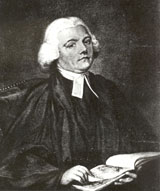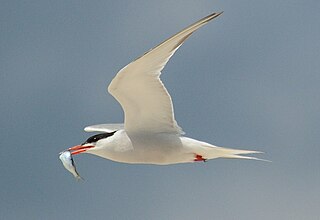
Duck is the common name for numerous species in the waterfowl family Anatidae which also includes swans and geese. Ducks are divided among several subfamilies in the family Anatidae; they do not represent a monophyletic group but a form taxon, since swans and geese are not considered ducks. Ducks are mostly aquatic birds, mostly smaller than the swans and geese, and may be found in both fresh water and sea water.

The environmental movement, also including conservation and green politics, is a diverse scientific, social, and political movement for addressing environmental issues. Environmentalists advocate the sustainable management of resources and stewardship of the environment through changes in public policy and individual behavior. In its recognition of humanity as a participant in ecosystems, the movement is centered on ecology, health, and human rights.

The barn swallow is the most widespread species of swallow in the world. It is a distinctive passerine bird with blue upperparts and a long, deeply forked tail. It is found in Europe, Asia, Africa and the Americas. In Anglophone Europe it is just called the swallow; in Northern Europe it is the only common species called a "swallow" rather than a "martin".

Pelicans are a genus of large water birds that make up the family Pelecanidae. They are characterised by a long beak and a large throat pouch used for catching prey and draining water from the scooped-up contents before swallowing. They have predominantly pale plumage, the exceptions being the brown and Peruvian pelicans. The bills, pouches, and bare facial skin of all species become brightly coloured before the breeding season. The eight living pelican species have a patchy global distribution, ranging latitudinally from the tropics to the temperate zone, though they are absent from interior South America and from polar regions and the open ocean.

The Royal Society for the Protection of Birds (RSPB) is a charitable organisation registered in England and Wales and in Scotland. It was founded in 1889. It works to promote conservation and protection of birds and the wider environment through public awareness campaigns, petitions and through the operation of nature reserves throughout the United Kingdom.

Birdwatching, or birding, is a form of wildlife observation in which the observation of birds is a recreational activity or citizen science. It can be done with the naked eye, through a visual enhancement device like binoculars and telescopes, by listening for bird sounds, or by watching public webcams.

The red-throated loon or red-throated diver is a migratory aquatic bird found in the northern hemisphere. The most widely distributed member of the loon or diver family, it breeds primarily in Arctic regions, and winters in northern coastal waters. Ranging from 55 to 67 centimetres in length, the red-throated loon is the smallest and lightest of the world's loons. In winter, it is a nondescript bird, greyish above fading to white below. During the breeding season, it acquires the distinctive reddish throat patch which is the basis for its common name. Fish form the bulk of its diet, though amphibians, invertebrates, and plant material are sometimes eaten as well. A monogamous species, red-throated loons form long-term pair bonds. Both members of the pair help to build the nest, incubate the eggs, and feed the hatched young.

The common blackbird is a species of true thrush. It is also called Eurasian blackbird, or simply blackbird where this does not lead to confusion with a similar-looking local species. It breeds in Europe, Asia, and North Africa, and has been introduced to Australia and New Zealand. It has a number of subspecies across its large range; a few of the Asian subspecies are sometimes considered to be full species. Depending on latitude, the common blackbird may be resident, partially migratory, or fully migratory.

The red-billed chough, Cornish chough or simply chough, is a bird in the crow family, one of only two species in the genus Pyrrhocorax. Its eight subspecies breed on mountains and coastal cliffs from the western coasts of Ireland and Britain east through southern Europe and North Africa to Central Asia, India and China.

Terns are seabirds in the family Laridae that have a worldwide distribution and are normally found near the sea, rivers, or wetlands. Terns are treated as a subgroup of the family Laridae which includes gulls and skimmers and consist of eleven genera. They are slender, lightly built birds with long, forked tails, narrow wings, long bills, and relatively short legs. Most species are pale grey above and white below, with a contrasting black cap to the head, but the marsh terns, the Inca tern, and some noddies have dark plumage for at least part of the year. The sexes are identical in appearance, but young birds are readily distinguishable from adults. Terns have a non-breeding plumage, which usually involves a white forehead and much-reduced black cap.

The brown pelican is a North American bird of the pelican family, Pelecanidae. It is one of three pelican species found in the Americas and one of two that feed by diving in water. It is found on the Atlantic Coast from Nova Scotia to the mouth of the Amazon River, and along the Pacific Coast from British Columbia to northern Chile, including the Galapagos Islands. The nominate subspecies in its breeding plumage has a white head with a yellowish wash on the crown. The nape and neck are dark maroon–brown. The upper sides of the neck have white lines along the base of the gular pouch, and the lower fore neck has a pale yellowish patch. The male and female are similar, but the female is slightly smaller. The nonbreeding adult has a white head and neck. The pink skin around the eyes becomes dull and gray in the nonbreeding season. It lacks any red hue, and the pouch is strongly olivaceous ochre-tinged and the legs are olivaceous gray to blackish-gray.

Gilbert White FRS was a "parson-naturalist", a pioneering English naturalist and ornithologist. He remained unmarried and a curate all his life. He is best known for his Natural History and Antiquities of Selborne.

The common tern is a seabird in the family Laridae. This bird has a circumpolar distribution, its four subspecies breeding in temperate and subarctic regions of Europe, Asia and North America. It is strongly migratory, wintering in coastal tropical and subtropical regions. Breeding adults have light grey upperparts, white to very light grey underparts, a black cap, orange-red legs, and a narrow pointed bill. Depending on the subspecies, the bill may be mostly red with a black tip or all black. There are a number of similar species, including the partly sympatric Arctic tern, which can be separated on plumage details, leg and bill colour, or vocalisations.

The superb fairywren is a passerine bird in the Australasian wren family, Maluridae, and is common and familiar across south-eastern Australia. The species is sedentary and territorial, also exhibiting a high degree of sexual dimorphism; the male in breeding plumage has a striking bright blue forehead, ear coverts, mantle, and tail, with a black mask and black or dark blue throat. Non-breeding males, females and juveniles are predominantly grey-brown in colour; this gave the early impression that males were polygamous, as all dull-coloured birds were taken for females. Six subspecies groups are recognized: three larger and darker forms from Tasmania, Flinders and King Island respectively, and three smaller and paler forms from mainland Australia and Kangaroo Island.

Plumage refers both to the layer of feathers that cover a bird and the pattern, colour, and arrangement of those feathers. The pattern and colours of plumage differ between species and subspecies and may vary with age classes. Within species, there can be different colour morphs. The placement of feathers on a bird is not haphazard, but rather emerge in organized, overlapping rows and groups, and these feather tracts are known by standardized names.

John Roundell Palmer, 4th Earl of Selborne,, is a British peer, ecological expert and businessman. He is one of the hereditary peers elected to remain in the House of Lords after the passing of the House of Lords Act 1999, sitting as a Conservative.
Eliza Phillips was an English animal welfare activist and co-founder of the Royal Society for the Protection of Birds. She was the RSPB's vice president and publications editor.

The Selborne Society or Selborne League formed in November 1885 to "perpetuate the name and interests of Gilbert White, the Naturalist of Selborne" and following the philosophy of observation rather than collection was Britain's first national conservation organization. The object of the Society was the preservation of birds, plants and pleasant places. It was founded by George Arthur Musgrave and his wife Theresa of Torquay in Devon and it was inspired by Gilbert White's well-known book, The Natural History and Antiquities of Selborne. The society amalgamated with the Plumage League which had been founded by the Reverend Francis Orpen Morris and Lady Mount Temple in January 1886 with the full title of the Selborne Society for the Preservation of Birds, Plants and Pleasant Places while the campaigners against the use of birds for fashion formed the Plumage Section with royal patronage from Princess Christian, daughter of Queen Victoria. From 1887 it started producing the Selborne Letters as well as the Selborne Magazine. The organization became more organized after a meeting held on 26 January 1888, when Alfred, Lord Tennyson was appointed as president. The aim of "education" was added at this meeting. The Selborne Magazine was retitled as Nature Notes from 1890 under the editorship of Percy Myles and James Britten. After Britten's death in 1897 the editor was G. S. Boulger. The Parkinson Society founded in 1884 by Juliana Ewing to encourage gardening also merged into the Selborne Society.

The following is a glossary of common English language terms used in the description of birds—warm-blooded vertebrates of the class Aves, characterized by feathers, the ability to fly in all but the approximately 60 extant species of flightless birds, toothless, beakedjaws, the laying of hard-shelled eggs, a high metabolic rate, a four-chambered heart and a strong yet lightweight skeleton.



















